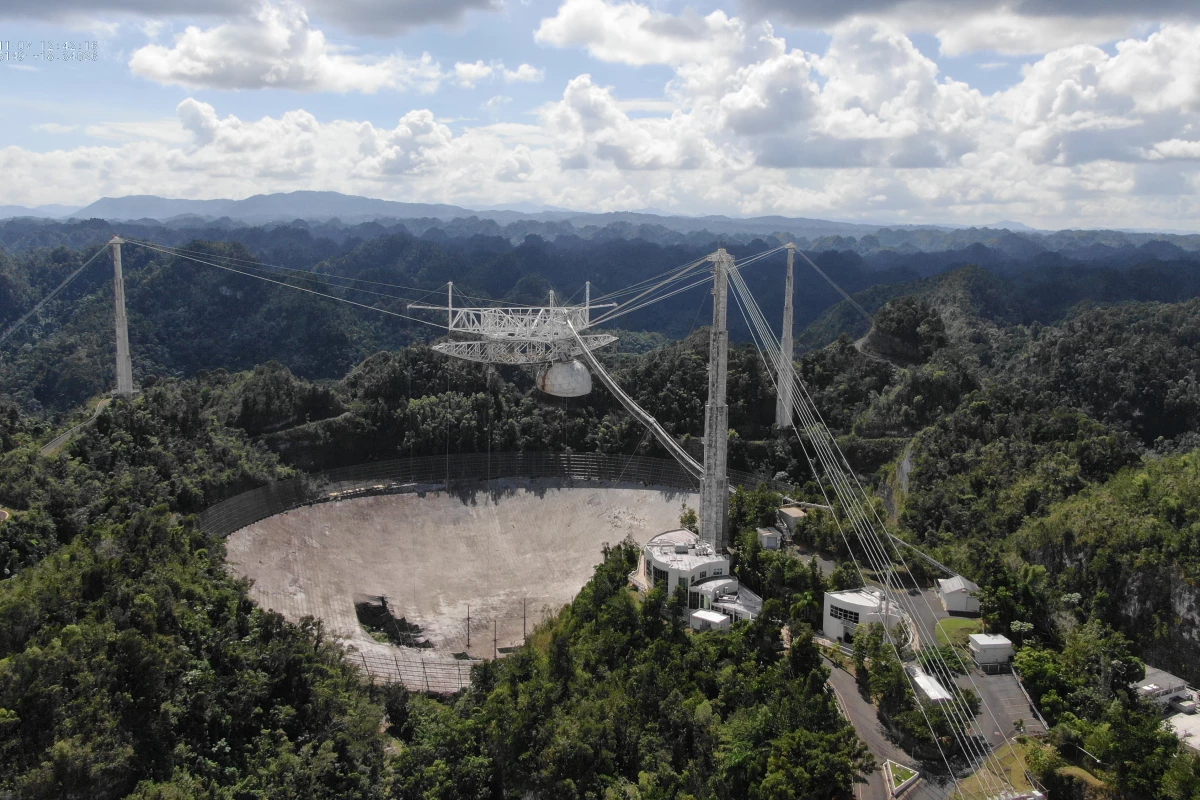The Arecibo Observatory's famous 1,000-ft (305-m) radio telescope is to be demolished after a second support cable failed. An assessment by the engineering firm of Thornton Tomasetti has determined that the radio dish and its 900-ton instrument platform are too unstable to be safely repaired.
Once the largest single-dish radio telescope in the world, the Arecibo radio telescope has been in service for 57 years. It's funded by the US National Science Foundation (NSF) and operated by the University of Central Florida for astronomy, planetary, solar system, and geospace research, as well as gathering data for the SETI project to seek out extraterrestrial civilizations. In addition, it was a filming location for the science fiction film Contact and the James Bond thriller Goldeneye.
All that came to a halt in August when an auxiliary cable failed and came loose from one of the support towers, tearing a 100-ft (30-m) gap in the lightly-built dish. The NSF decided to repair the dish and commissioned a survey, but on November 6, a second cable snapped unexpectedly despite being well below its believed breaking strength. Inspection of other cables found that some of the main cables had wire breaks and auxiliary cables were slipping from their sockets.
The upshot of this is that the radio telescope is too unstable to be safely repaired and could collapse at any time. The Observatory is therefore working on plans for dismantling the giant instrument while temporarily closing other site installations and moving equipment that might be destroyed if the telescope falls apart catastrophically.
After the demolition is completed, the science and education centers will be restored.
"Over its lifetime, the Arecibo Observatory has helped transform our understanding of the ionosphere, showing us how density, composition and other factors interact to shape this critical region where Earth’s atmosphere meets space," says Michael Wiltberger, head of NSF's Geospace Section. "While I am disappointed by the loss of investigative capabilities, I believe this process is a necessary step to preserve the research community's ability to use Arecibo Observatory's other assets and hopefully ensure that important work can continue at the facility."
Source: NSF





